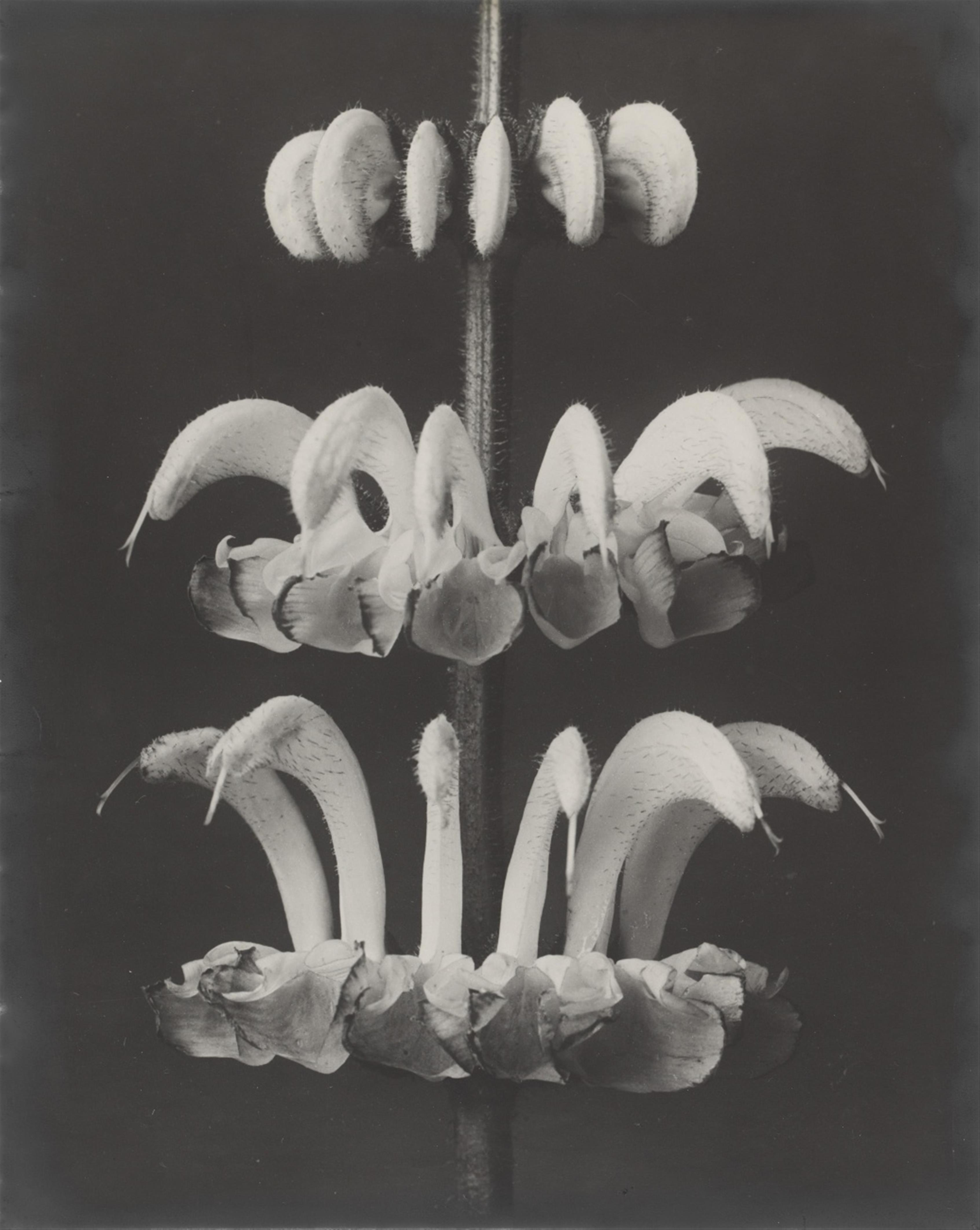Karl Blossfeldt
Salvia argentea (Sage)
1920-25
Vintage gelatin silver print. 29.8 x 23.8 cm. Numbered by the artist in pencil '25 hy K 75', estate stamp of the Wilde Archive, Cologne and titled and inscribed by Jürgen Wilde in pencil 'Originalabzug von Karl Blossfeldt 6 x vergr.', on the verso. - Slight oxidation mirroring along the edges. Matted.
“Art is created through the choosing of forms and their translation, and as long as the eye has chosen and the camera translated, Bloßfeldt's [sic!] images transform nature's phenomena into an art form”, wrote Curt Glaser, then director of the Berlin Art Library, in a review of Karl Blossfeldt's book “Urformen der Kunst”, which was published in 1928 (cit. from Inka Graeve-Ingelmann, in: Karl Blossfeldt. Fotografien, exhib. cat. Pinakothek der Moderne, Munich, Berlin 2012, p. 25). The volume, published by the Berlin gallerist Karl Nierendorf, was to catapult Blossfeldt to international acclaim. It includes a variation of the present image of silver sage, shot before a neutral, dark background, but one showing the flower in a slightly earlier stage of bloom and at 4 x magnification (Karl Nierendorf (ed.), Urformen der Kunst. Photographische Pflanzenbilder von Karl Blossfeldt, Berlin 1928, pl. 61).
Both images capture the plants in minute detail, down to the tiny hairs on the stem and flowers, a quality that was considered genuinely photographic by the artist's contemporaries. By isolating and magnifying the motif, the photographer was able to completely alter its appearance, helping the viewer see the motif in a new light. Alongside the attention to detail, the photographs are also notable for their capacity to reveal analogue structures through the camera objective, a quality remarked upon by contemporaries. The most prominent example of this was the way Blossfeldt's image of a horsetail rush revealed its striking similarity to modern high-rise architecture, and the structure of the silver sage here appears similar to that of a Baroque chandelier. The gallerist Nierendorf interpreted Blossfeldt's images as revealing “the close affinity between everything man creates and the forms of nature” (Karl Nierendorf (ed.), Urformen der Kunst. Photographische Pflanzenbilder von Karl Blossfeldt, Berlin 1928, p. 24).
This elucidating quality relates Blossfeldt's images to the ideas of the constructivist artist László Moholy-Nagy, who suggested photography as an instrument to expand human perception. His work was picked up with great enthusiasm by the avant-garde, and Moholy-Nagy presented his works in the legendary “Film und Foto” exhibition of 1929, and the Bauhaus in Dessau honoured him with a solo exhibition in the same year. Largely unnoticed for decades, Blossfeldt took several thousand photographs of plants during his time teaching at the “Unterrichtsanstalt des Königlichen Kunstgewerbemuseums”, and must have been somewhat surprised at his discovery as one of the protagonists of New Objectivist photography, especially since he did not truly consider himself a photographer. Trained as a sculptor and model maker, Blossfeldt only took the photographs as working material for his class on “Modelling after living plants”.
It was Karl Nierendorf (mentioned above) who discovered Blossfeldt's unique work during an exhibition in the school of decorative arts. He displayed the works of the over seventy-year-old photographer in his gallery together with African sculptures and works of the Expressionist artist Richard Janthur. The present image of a silver sage plant uses Blossfeldt's preferred format of 30 x 24 cm and is printed on the relatively thin paper typically used by the artist. The letter and number code on the reverse of the works has not been deciphered to this day, but presumably refers to the aperture settings and focal distance of the magnifying lens.

